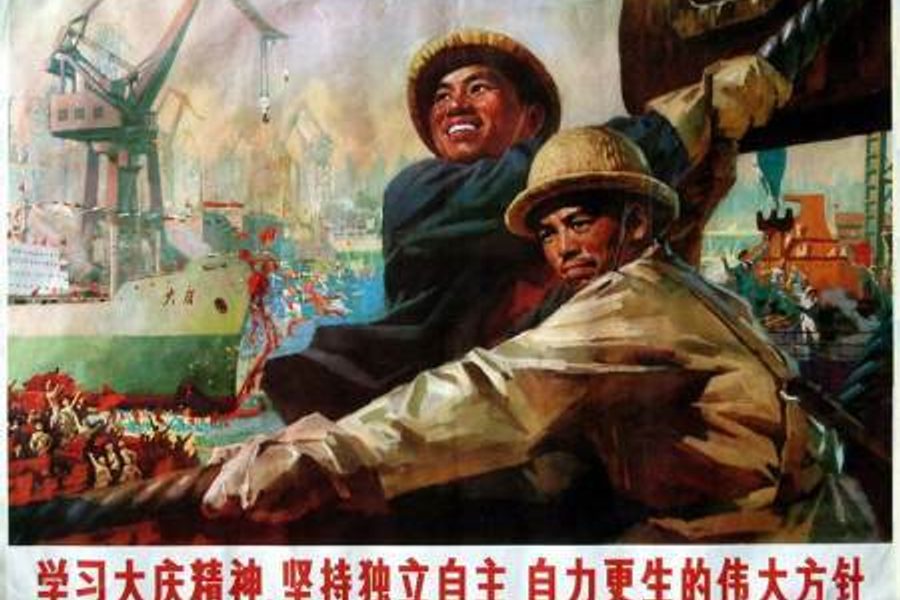
The next decade will belong to China. Despite a fierce financial crisis and political unrest, the ascendant dragon seems unstoppable — which raises serious concerns about the social and economic consequences of China’s explosive growth, from human rights to climate change.
U.S. labor has been a strong critic of US-China trade policies, but its influence has been limited by the political leverage China has stockpiled throughout its capitalist transformation. The pushback against the offshoring of once-solid U.S. jobs has yielded a few victories, like the recent ruling on steel pipe imports, but nothing that would dent China’s overall economic clout.
But how about changing China from the inside? From the outside, China presents itself as an authoritarian superpower, wielding its economic influence to triangulate on international issues like carbon emissions and human rights abuses. But viewed from inside, recent labor conflicts and human rights crises could betray expanding cracks in the system.
According to an article in the journal Liaowang–published and analyzed in China Labour Bulletin – intensifying labor unrest threatens to overwhelm institutions set up to mediate worker-management disputes. Labor dispute cases handled by civil courts nearly doubled between 2007 and 2008, and “[in the first half of 2009, 170,000 cases were accepted, up over 30 percent.”
Zhang Jianguo, the director of the Collective Contracts Department with the All China Federation of Trade Unions, gave a surprisingly frank assessment of the potential for workplace disputes to flare into violence:
…in the process of SOE [state-owned enterprise] restructuring, some local officials, departments, and enterprises ignored employees’ democratic rights, declared bankruptcy without proper authorization, and sold off assets directly linked to enterprise survival, disregarded the fate of the employees, and national interests, and in some cases, sold off national assets at below market price….
Zhang Jianguo thinks that the main characteristics of some of the mass incidents caused by SOE restructuring were: having a clearly disadvantaged group with a strong desire to pursue its interests, the surfacing of social conflict, and the gap between laws and regulations and social reality.
It appears that the withering of massive state-owned factories has left behind a workforce that is both disgruntled and relatively cohesive. The struggle of an independent worker advocacy group in Xi’an province suggests that communities of displaced workers could form the basis of a ground-up challenge to breakneck privatization.
Over half of the union chairs surveyed by the ACFTU predicted that 2010 would bring a marked increase in “mass incidents,” which generally involve some kind of violent or nonviolent protest. In Shenzhen — a city that basically sprang up overnight to fuel coastal development – mass incidents more than doubled from 2007 to 2008, totalling 637 incidents, including many labeled by police as “potentially destabilizing.” The global financial crisis has stoked workers’ anger, particularly among the legions of migrant workers who are the most vulnerable to volatility in the international economy.
Zhang conceded that the country has fallen far short of adhering to the International Labor Organization’s standards for “tripartite mechanisms” of labor-management-government collaboration. Yet the cost of inaction is potentially disastrous:
Signing collective contracts, pushing for a collective wage consultation system, requires construction of a platform within the system for negotiations; without this platform and without these negotiations, strikes, road blockades and other extra-legal protests may occur.
The ACFTU, of course, is an arm of the state, so its pronouncements aren’t exactly objective, but the government does seem to recognize the need to restructure its labor policies – if for no other reason than to avoid mass violence.
If labor policy reform gives workers more collective bargaining power, Chinese workers could complement the work of U.S. unions in agitating for more equitable working conditions. This is especially crucial in light of Beijing’s new trade pact with the Association of South East Asian Nations (ASEAN), which has drawn some international criticism for potentially undermining for local industries.
While it’s unclear how China’s economic presence across Asia will evolve, new trade dynamics could leave Chinese workers, who are often seen as a drain on U.S. jobs, at the other end of the offshoring dilemma: rising wages, according to the Financial Times, could encourage some China-based employers to seek even cheaper labor south of the border – a pattern that will strike American workers as tragically familiar.
With China trading its way into other regions of the global economy, Beijing may find it easier to avoid pressure from Western industrialized nations on issues like currency manipulation or sweatshops run by multinationals. But the increasingly disenchanted and disenfranchised Chinese workforce could emerge as a check on employers and the corporate-friendly state. Beijing is trying to stay one step ahead of the crisis by channeling workers’ frustrations into existing legal mechanisms.
But 2010 could be the year when China and the rest of the world realize that sooner or later, the race to the bottom will run into a finish line, and a nascent indigenous labor movement may be poised to draw it.
Michelle Chen is a contributing writer at In These Times and The Nation, a contributing editor at Dissent and a co-producer of the “Belabored” podcast. She studies history at the CUNY Graduate Center. She tweets at @meeshellchen.








